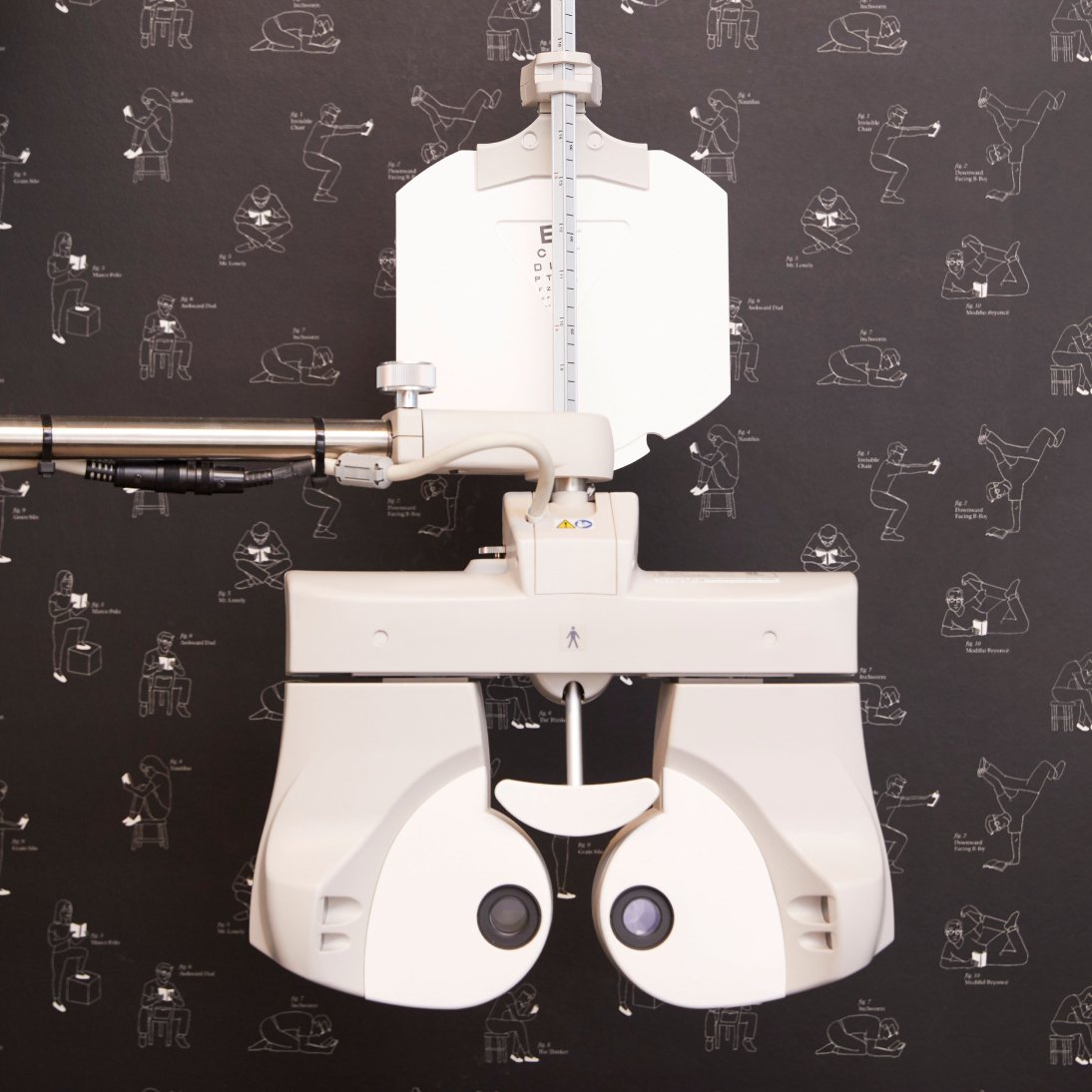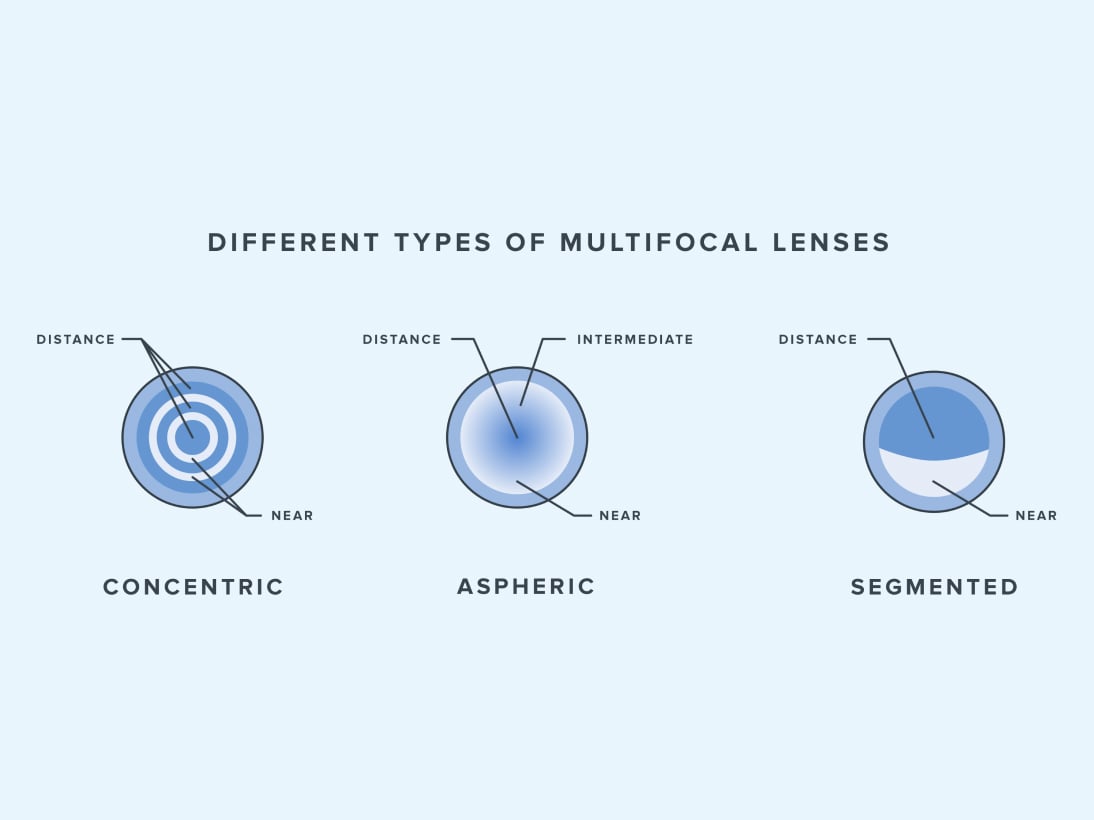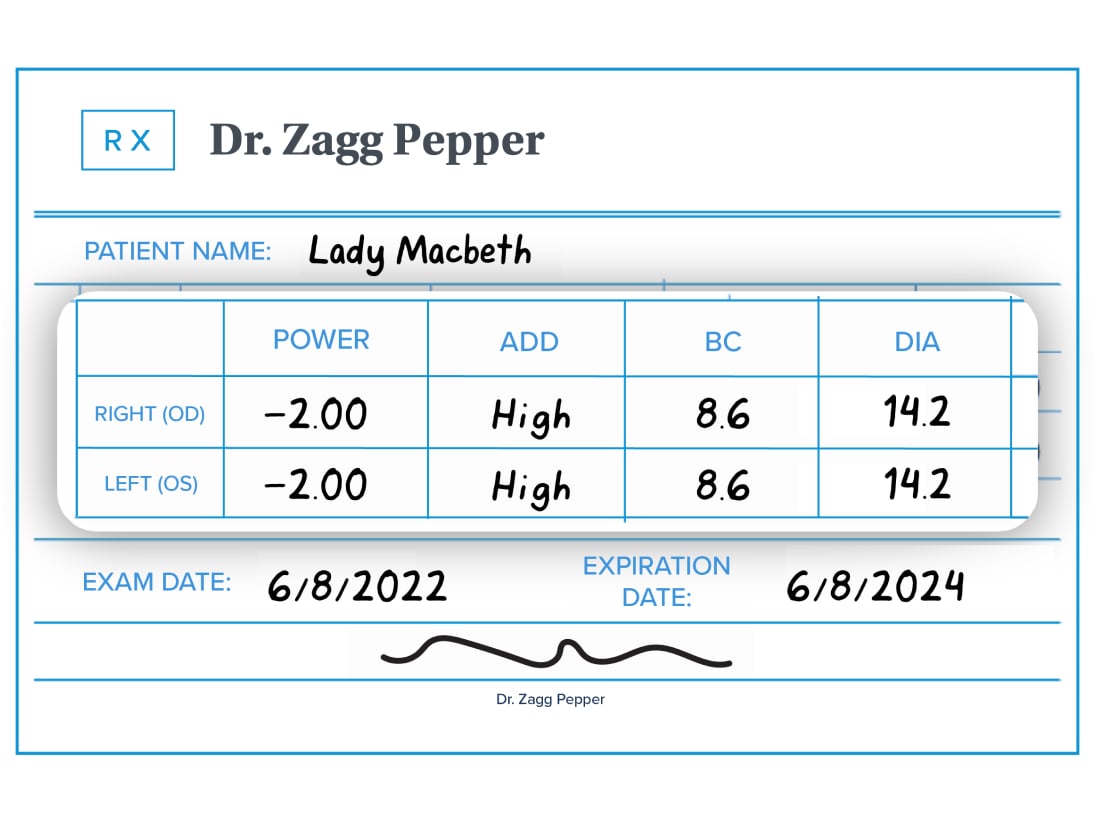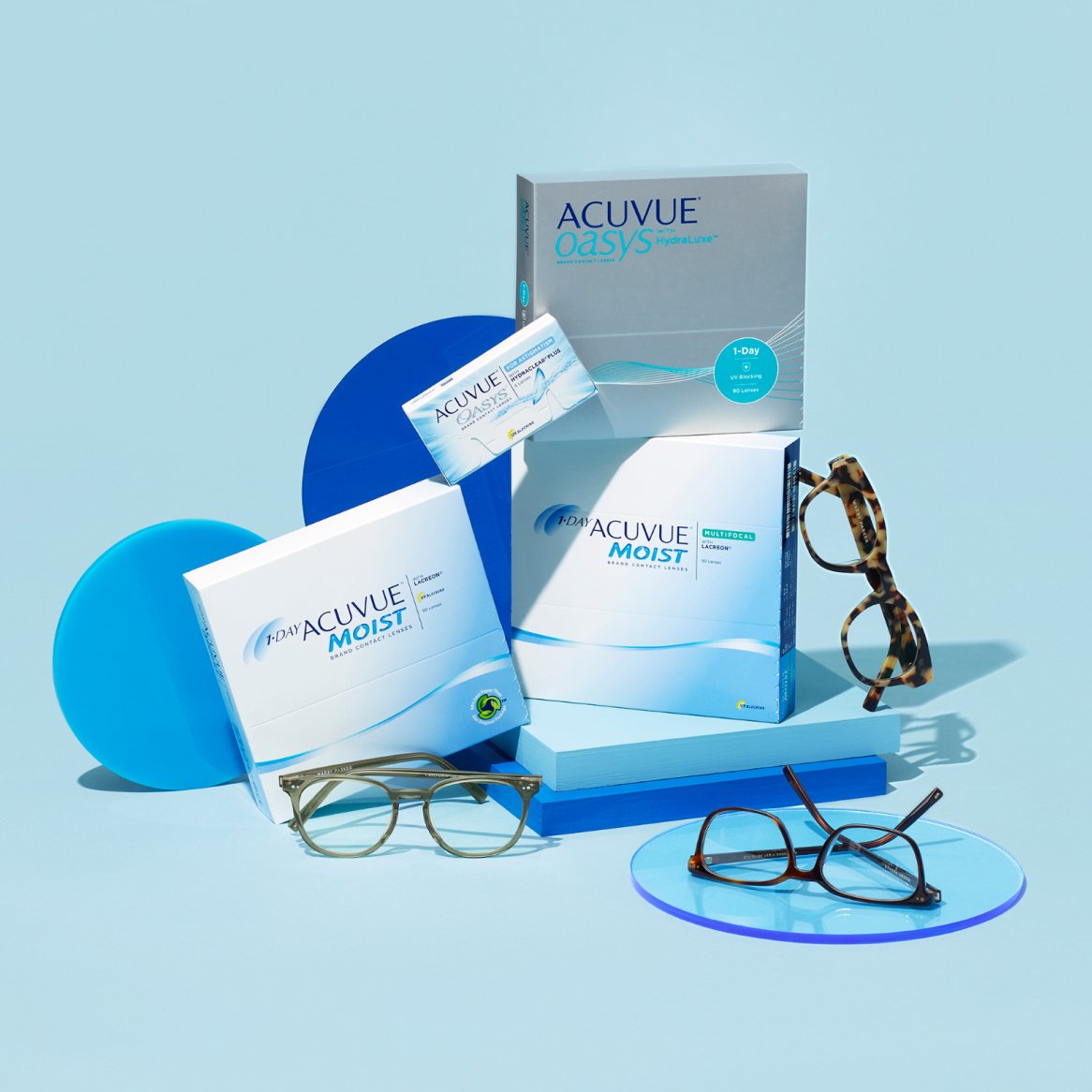Multifocal and bifocal contacts work by fitting multiple prescription strengths on a single lens, a feat made possible by their unique design.
But how on Earth can a pair of teeny, tiny contact lenses accomplish the same task as progressive glasses?
This article will demystify how multifocal and bifocal contacts work by taking a closer look at what they are, the different types of multifocal contact lenses, and how to use them.
What Are Multifocal Contact Lenses?
Multifocal contacts comprise multiple prescription strengths in a single contact lens to correct vision at multiple distances (e.g., near, intermediate, and far). In other words, you might think of multifocal contacts as all-in-one contacts for reading and distance (and everything in between).
“Multifocal contacts” is an umbrella term that includes any contact lenses with more than one lens strength. Bifocal contacts would fall into this category, as they incorporate a zone for near vision and a zone for distance.
The most common candidates for multifocal contacts are individuals with presbyopia, which you might know as age-related farsightedness. Presbyopia makes it hard to focus on close-up objects and text, and is usually what lands middle-aged folks with a shiny new pair of reading glasses.
If you’re a contact wearer with presbyopia, multifocal contacts will make it possible to do your reading and other close-up work without the glasses.
The Science Behind How Multifocal and Bifocal Contacts Work
Similar to multifocal eyeglass lenses, multifocal contacts are divided into different zones of vision: a zone for up close, a zone for intermediate vision, and a zone for distance. Multifocal contacts work differently depending on the type of contact and how the zones are oriented on the lens.
When wearing multifocal or progressive glasses, you can just tilt your head or intentionally direct your eyes to look through a certain zone in the lens. It’s different for multifocal contacts—the lenses move with your eye, so you can’t just tilt your head or look in a certain spot.
Multifocal contacts work with the natural function of your pupils. The pupils of your eyes dilate slightly as you look at distant objects, and they constrict when you read or look at something close-up. The visual zones of multifocal contacts allow you to see clearly as they align with these slight changes in pupil diameter, allowing your eyes to naturally focus on things distant or near.
Different Types of Multifocal Contact Lenses
There are three main types of multifocal contacts:
- Concentric multifocal contact lenses – These contacts have concentric circles (circles with a common center point) on the lens, with each circle alternating between near and distance zones of vision. Imagine a target (like on a dart board) with a distance or near zone in the center bullseye and then each ring outside of it alternating between near and distance strengths.
- Aspheric multifocal contact lenses – Similarly to how progressive lenses work, these contacts have one prescription strength at the center of the lens and a gradual transition in power as you move across the lens.
- Segmented bifocal contact lenses – Also called translating multifocal contact lenses, these are rigid gas- permeable lenses that are similar to bifocal glasses, with the near zone at the bottom of the lens and the distance zone in the top half of the lens. The lower edge of the lens is a bit flattened to help it stay in place.
A Multifocal Contact Lens Prescription Explained
There are many elements that make up a contact lens prescription. Your prescription will look like a grid or table with an array of terms, abbreviations, and numbers. You will likely see rows on the table for OD and OS (which represent the right and left eyes, respectively) and then columns for the required elements of your prescription.
In addition to the basic elements you’d see on any contact lens prescription—the contact lens brand, BC (base curve), DIA (diameter), and PWR/SPH (power or sphere)—a prescription for multifocal contacts will also have one or both of the following:
- ADD – This is an abbreviation for “addition” or “additional power.” It might also be written as “add power” or “extra strength.” This figure indicates the level of correction needed for near vision. Sometimes it’s identified as “high,” “medium,” or “low,” as opposed to with diopters. ADD may not be the same in both eyes.
- D/N – This abbreviation stands for “dominant eye” or “non-dominant eye.” Not all contacts brands use this element, so your prescription might not include it. Your dominant eye (usually indicated with a “D”) favors distance vision, while your non-dominant eye (typically indicated with an “N”) prioritizes near vision.
Multifocal contact lenses for astigmatism will also include CYL (for “cylinder”) and AXIS in their prescription. Check our guide on How to Read a Contact Lens Prescription for a more thorough understanding of all these terms.
Example of a Prescription for Multifocal Contacts
How to Use Multifocal Contact Lenses
Just like with any new prescription, your eyes will need time to adjust to wearing your multifocal contacts. After a while, you’ll view distant and near objects clearly by looking through the appropriate zone of the lens without having to give it a single thought. Vision and clarity differs between multifocal contacts and multifocal glasses.
Your eye doctor will give you more details about your particular brand of contacts and wear schedule, as well as offer tips for getting used to them.
How to Put In Multifocal Contact Lenses
Most soft multifocal contacts can be put in just like any other type of contacts. (If you’re new to wearing contacts, your eye doctor will teach you how to put in contacts.)
Unlike concentric and aspheric multifocal contacts, segmented multifocal contacts are rigid gas permeable and have a clear top and bottom to them—the bottom may be slightly flat or more weighted to help keep them in place. If you accidentally put them in the wrong way, they should orient themselves in your eye within a few minutes due to their design. Always follow your optometrist’s directions when learning to put in RGP multifocal contacts.
The Takeaway: Are Multifocal Contacts Worth It?
Your trusty Magic 8 Ball would probably say, “All signs point to yes.” If you need more than one prescription strength and would prefer not to use glasses for close-up work, then multifocal contacts may be the perfect solution. Book an eye exam if you’re interested in multifocal contacts, and find out whether they’re right for you.








